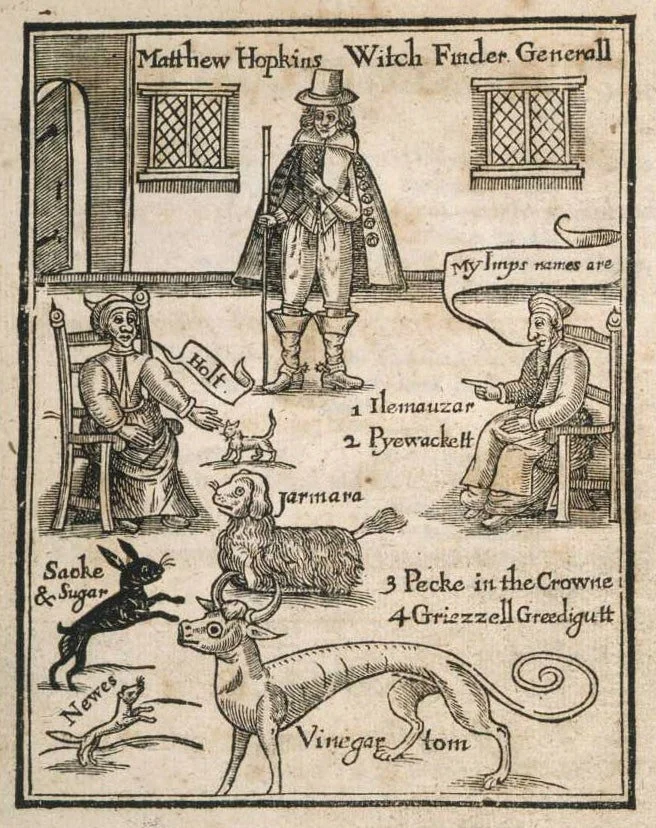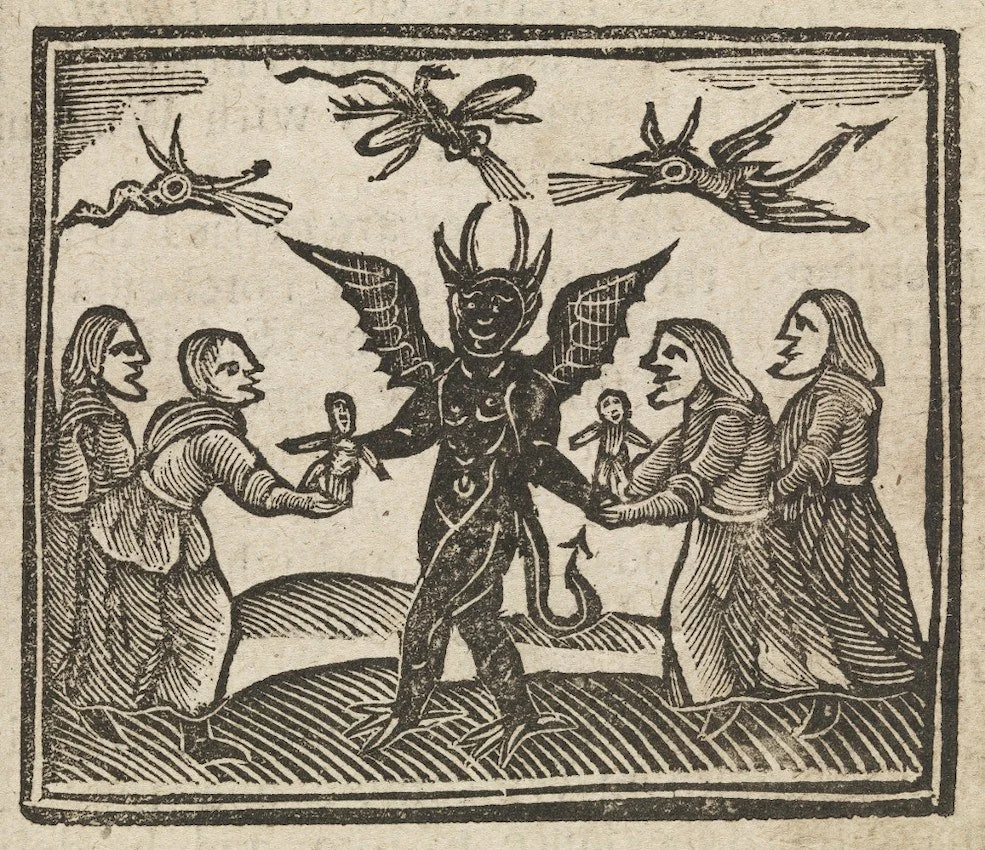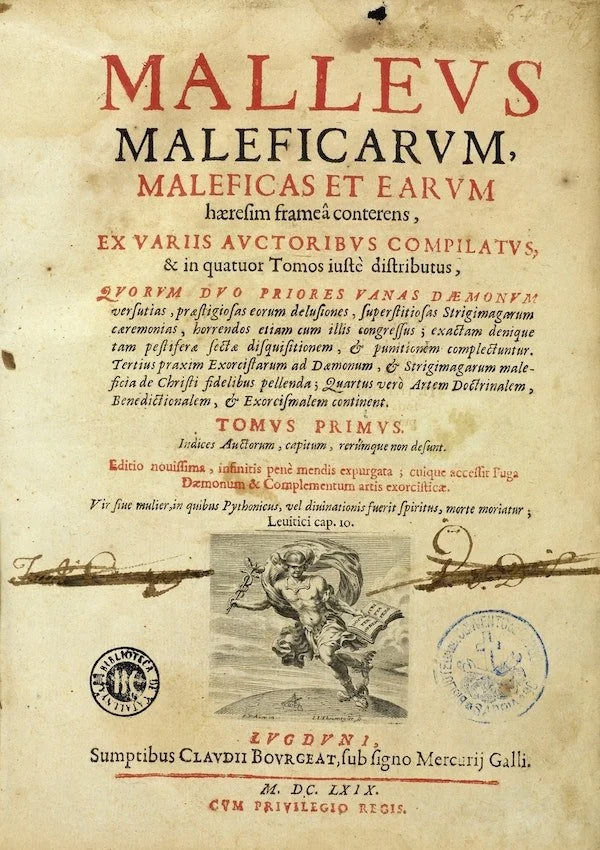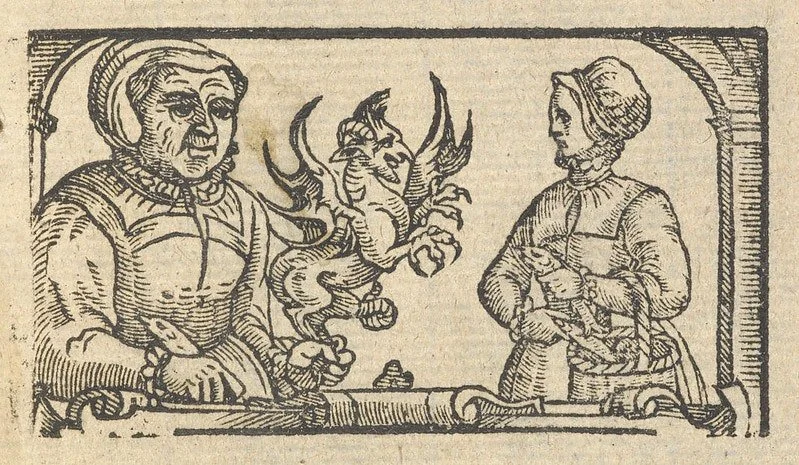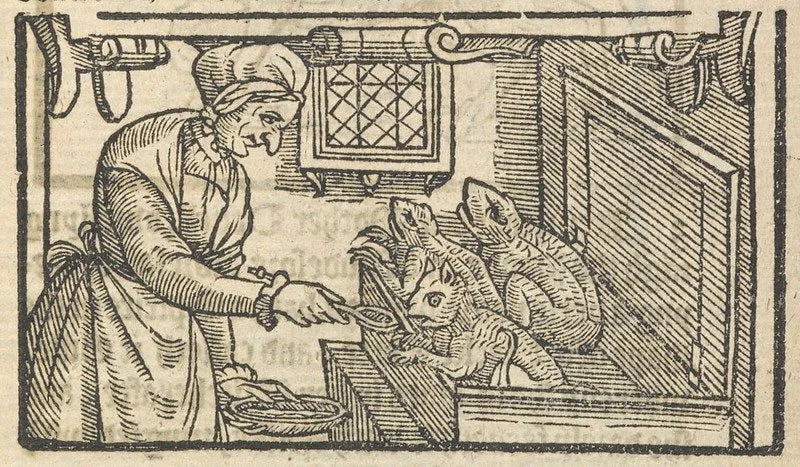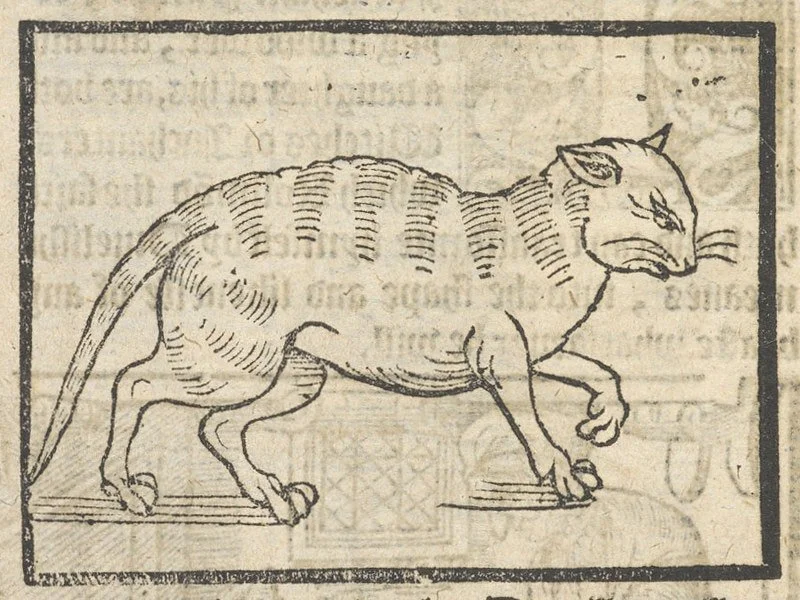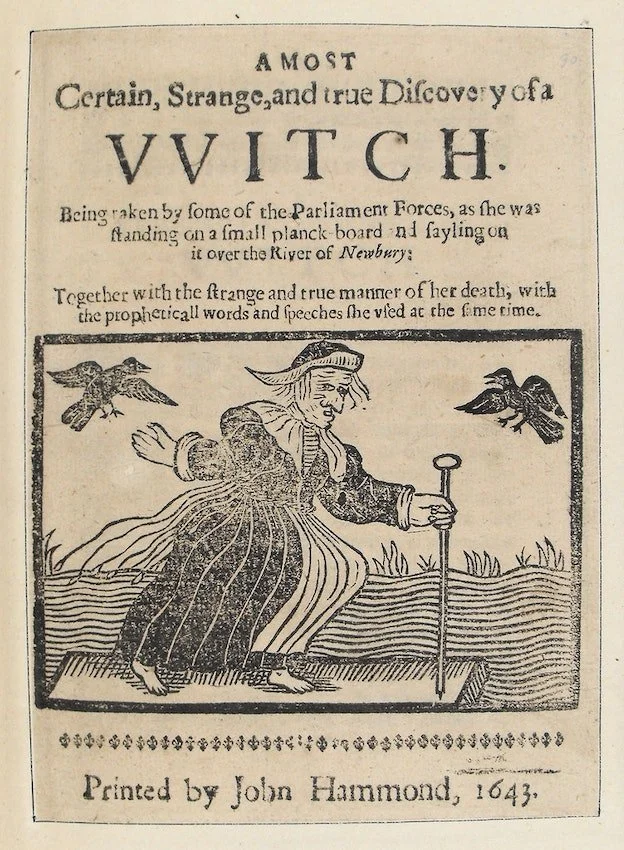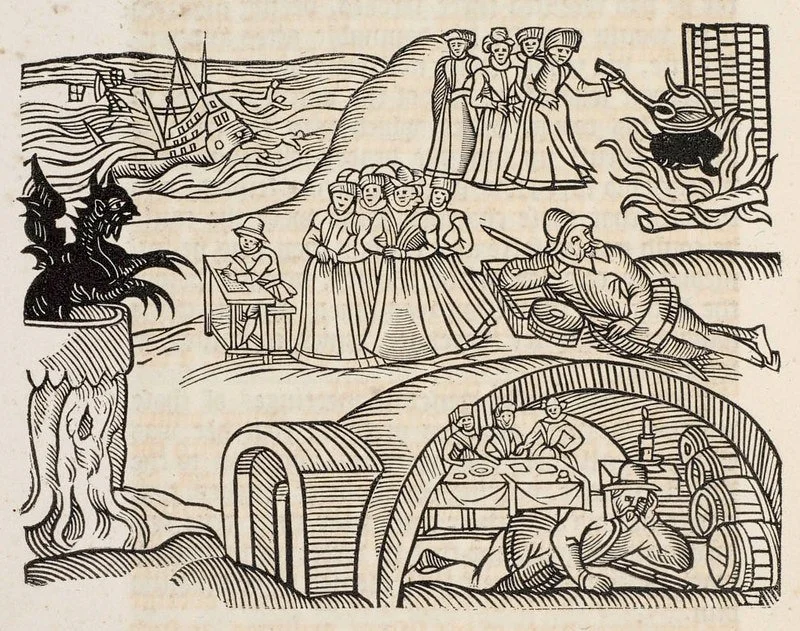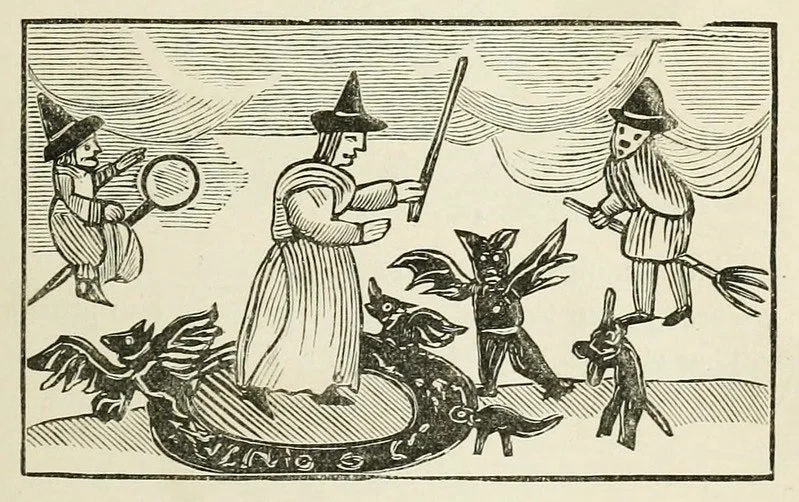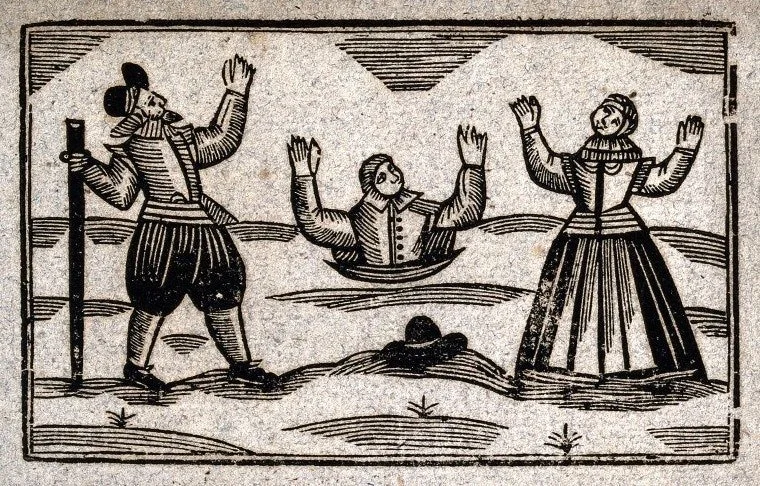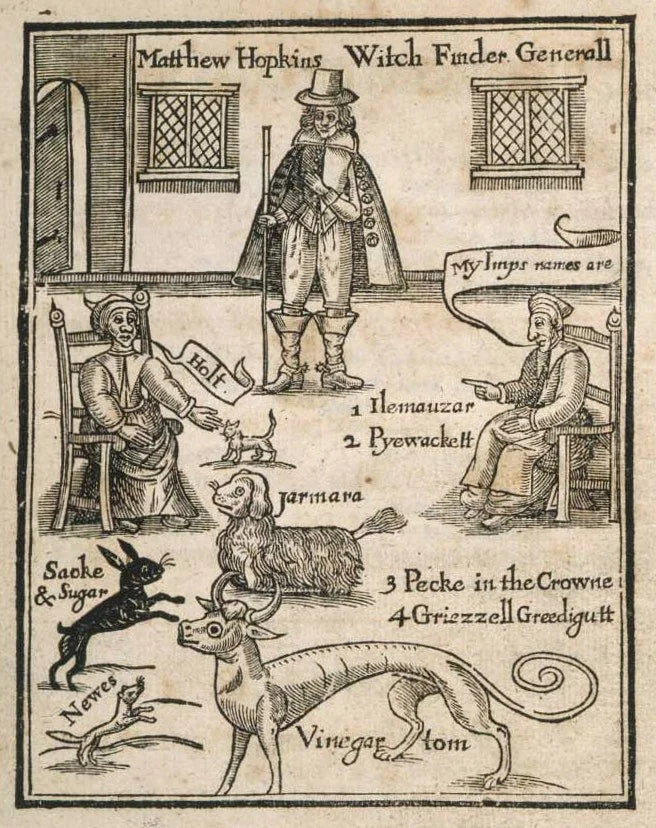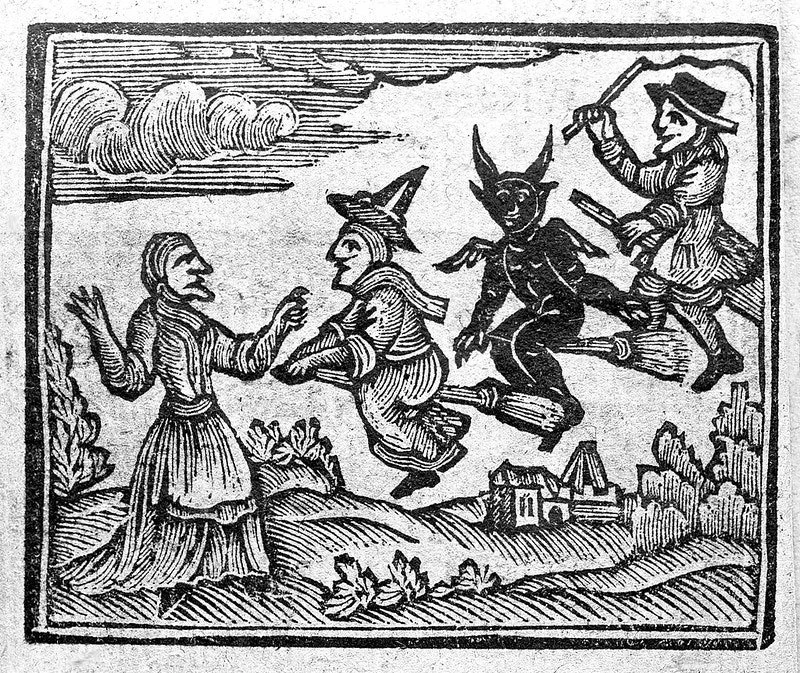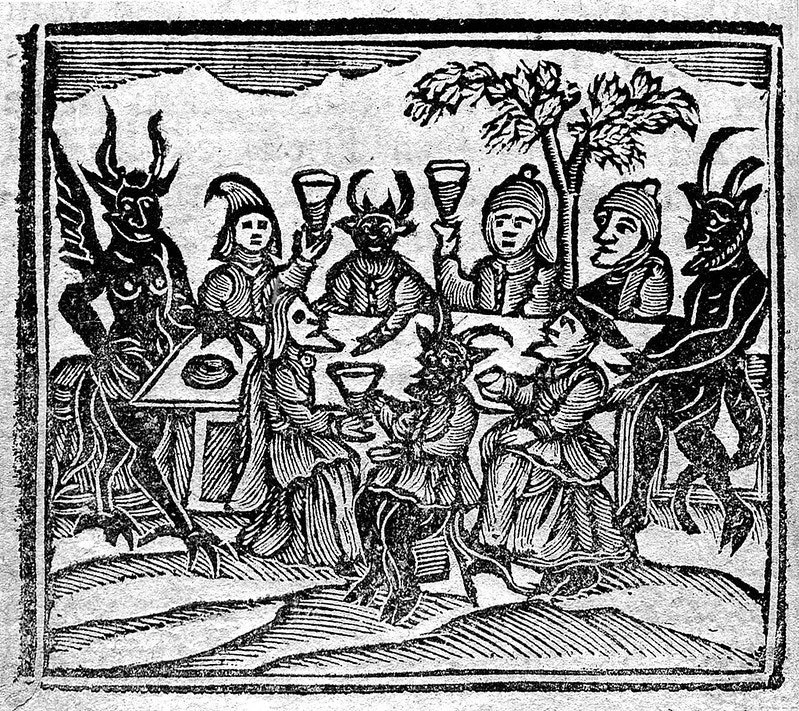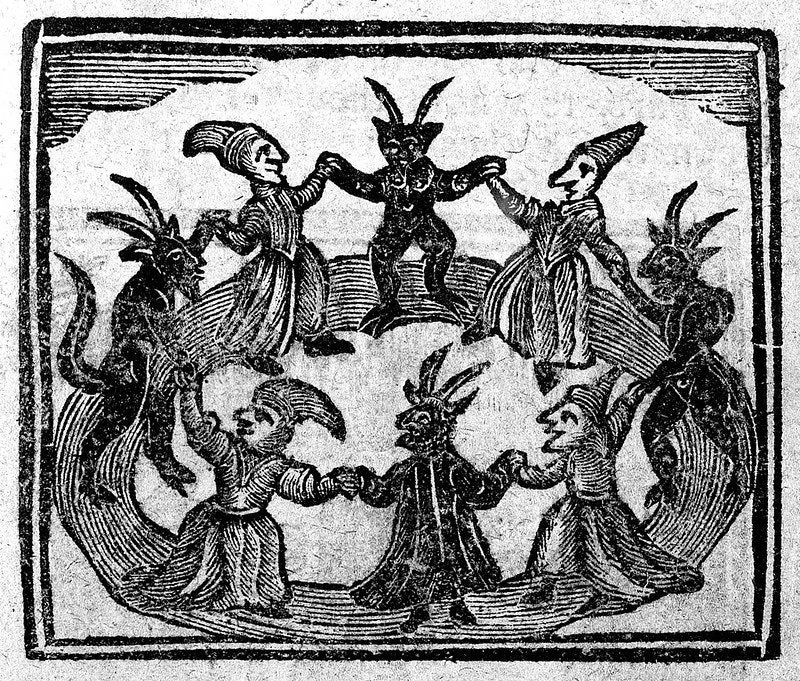Woodcuts and Witches: The Folkloric Image of the Crone
BY
John Crabb
An essay published with permission from
THE PUBLIC DOMAIN REVIEW
2018
Introduction
The image of the witch as we know it today has its origins in medieval Europe, particularly in the period between the 14th and 17th centuries. During this time, many people were accused of practicing witchcraft and were subsequently persecuted and often executed.
One influence on the image of the witch was the figure of the alewife. Alewives were women who brewed and sold ale, a popular drink in medieval Europe. Because brewing was a female-dominated profession at the time, alewives were often viewed with suspicion and accused of witchcraft. As a result, the image of the alewife became associated with that of the witch — a hat, a broom, a large brewing cauldron.
Another influence on the image of the witch was the rise of the woodcut. Woodcuts were a popular form of illustration in medieval Europe. Witches depicted on these mass-produced images helped to spread the stereotypical imagery and popularize it throughout Europe. In addition, the woodcuts often emphasized the more grotesque and demonic aspects of the witch, further cementing this image in the popular imagination.
Woodcuts and Witches: The Folkloric Image of the Crone
Witches presenting wax dolls to the devil, featured in The History of Witches and Wizards (1720).
The publishing revolution of the sixteenth and seventeenth centuries witnessed an explosion of printed material, democratising information and pushing it into the hands and sight of more people than ever before. A large single sheet of cheap paper could be printed with a proclamation, adorned with a woodcut, and sent out among the masses. These broadsides were sold for a penny on street corners, pasted on ale house walls, and stuck up on market posts. In 1592, the playwright and stationer Henry Chettle described how ballads "infected London the eie of England", then travelled through the country via ballad-mongers, who could "spred more pamphlets by the State forbidden than all the Booksellers in London". There was a hunger (then as now) for tales of sex and scandal, and, for the first time, a network of illustrators, printers, and distributors were able to glut this desire. The Jacobean playwright Thomas Middleton referred to ballads as "fashions, fictions, felonies, fooleries". Cheap print was the medium of the masses, and the crude woodcuts were the visual language of early modern England.
This revolution in publishing coincided with what has been termed "the European witch craze": a moral panic and collective psychosis that spread through Europe and Scandinavia during the sixteenth and seventeenth centuries. The seed of this hysteria was planted in 1484 when two Dominican Inquisitors appealed to Pope Innocent VIII for permission to launch a witch hunt, and he responded by issuing a papal bull authorising their efforts. Two years later they published their treatise, the Malleus Maleficarum (Hammer of the Witches), which, for the first time, elevated witchcraft to the crime of heresy and justified its extermination with papal authority. Leaning heavily on the supposed papal endorsement, the Malleus Maleficarum painted a terrifying picture of witchcraft and preached the absolute necessity of vanquishing this largely unrecognised evil.
Title page to Malleus Maleficarum.
Apparently, witches were everywhere. Torture was recommended for extracting confessions, the death penalty was revealed as the only remedy against sorcery, and burning at the stake was proposed as a suitable method of execution. With one fell swoop, the persecution of witches was begun and an entire methodology was established. The book was a bestseller and strongly influenced the obsession with witchcraft for two hundred years, spreading slowly through continental Europe and then the Scandinavian countries, which became particularly obsessed with the subject. In Britain, the witch craze hit later, but it was rewarded with numerous pamphlets and ballads devoted to salacious details of devilish mischief.
One of the earliest and most notorious British witchcraft pamphlets was published in 1579: A Rehearsall both Straung and True, of Hainous and Horrible Actes Committed by Elizabeth Stile, alias Rockingham, Mother Dutten, Mother Deuell, Mother Margaret, Fower Notorious Witches. Stile was a sixty-five-year-old widow and beggar accused of bewitching an innkeeper. The pamphlet describes her association with three other old women known as Mother Margaret, Mother Dutten, and Mother Devell, as well as a man named Father Rosimunde, who could transform himself "into the shape and likenesse of any beaste whatsoever he will". Woodcuts show these old women and several animal familiars, which they reportedly fed on their own blood.
Image from the title page of A Rehearsall both Straung and True, of Hainous and Horrible Actes Committed by Elizabeth Stile (1579).
Witch pictured feeding her familiars with blood, in A Rehearsall both Straung and True, of Hainous and Horrible Actes Committed by Elizabeth Stile (1579).
Cat pictured in A Rehearsall both Straung and True, of Hainous and Horrible Actes Committed by Elizabeth Stile (1579).
The folkloric image of the crone was established through these images and repeated in similar pamphlets over the next century. These witches were usually bitter old women who lived on their own and kept cats or other animals as pets. The Wonderful Discoverie of the Witchcrafts of Margaret and Phillip Flower, Daughters of Joan Flower neere Beuer Castle (1619) and A Most Certain, Strange and True Discovery of a Witch (1643) are particularly famous examples that reinforced this archetype. Latent sexism and fear of those who lived on the fringe of society doubtless motivated much of this persecution. The latter pamphlet manages to mix sexism with scorn by doubting that women are even capable of performing the same sorcery that certain men have achieved:
Many are in a belief, that this silly sex of women by no means attaine to that so vile and damned a practice of sorcery and Witch-craft, in regard of their illiteratenesse and want of learning, which many men have by great learning done, Adam by temptation toucht and tasted the deceiving apple, so some high learnd & read by the same temptation that deceived him hath bin so insnared to contract with the Divel; as for example, in the instancing a few, as English Bacon of Oxford, Vandermast of Holland, Bungay of Germany, Fostus of the same, Franciscus the English Monke of Bury, Doctor Slackleach and divers others which were too tedious to relate of, but how weake women should attain unto it many are incredible of the same, and many too are opposite in opinion against the same, that giving a possibility to their doubtings, that the malice, and inveterate malice of a woman entirely devoted to her revengefull wrath frequenting desolate and desart places, and giving way unto their wished temptation, may have converse with that world roaring lion.
Title page of A Most Certain, Strange and True Discovery of a Witch (1643).
In 1589, King James VI of Scotland sailed to Copenhagen to marry Princess Anne of Denmark. The return journey was troubled by bad weather, and during their voyage to Scotland terrible storms forced the ship to seek shelter in Norway. The voyage was finally completed safely, but all involved were suitably rattled. In a stunning series of events, Danish courtiers subsequently accused women of sabotaging the journey using magic, prompting witchcraft trials first in Denmark and later, when James decided to follow suit, in North Berwick, Scotland. Several Scottish nobles were implicated, and the seething jealousies and suspicions of two Royal houses bubbled into further accusations on both sides of the North Sea. King James grew paranoid that his life was in danger from witches, personally examined those on trial, and caused over a hundred people to be arrested. A 1591 pamphlet, Newes from Scotland, Declaring the Damnable Life of Doctor Fian, a Notable Sorcerer, who was Burned at Edenbrough in Januarie Last, 1591, chronicled the sensational trials and featured two illustrations with a number of interesting details.
The primary woodcut condenses several episodes from the story into a single image. The witches were accused of sending devils to stir up waves, and in the top left of the image, demons are seen swimming around James’ ship. In the top right, women are portrayed toiling around a cauldron, suggestive of sorcery, as they watch the fire burn and cauldron bubble.
First woodcut in the pamphlet Newes from Scotland, as reproduced in an 1816 facsimile.
Interestingly, this particular illustration was actually a stock image that appeared in other pamphlets divorced of any nefarious magical implications; woodcuts were often repurposed for different stories either on their own or incorporated into larger images. The Doctor Fian of the title was a local schoolmaster accused of leading the coven, and in this image he is portrayed as a clerk for the devil, who preaches from a pulpit. Fian suffered extreme torture, including having his feet crushed by an iron boot, before being burned alive at a stake. Newes from Scotland is one of the only surviving illustrations of Scottish witchcraft from this period but had lasting significance as an influence on "the Scottish play", Shakespeare’s Macbeth, which includes several references to the North Berwick trials and saw its first performance during a visit by Queen Anne’s brother, the king of Denmark, in 1606.
This episode in King James’ life was a profound one and inspired a deep interest in sorcery and witchcraft, some of which he absorbed through his young Danish wife and the Scandinavian court, which had already witnessed considerable hysteria around the phenomenon of witches. The monarch’s interest in the dark arts even gave birth, in 1597, to his very own work on the dangers of black magic, Daemonologie, which included Newes from Scotland as an addendum. Six years later the Scottish and English crowns were unified for the first time, and James VI was declared King James I of England and Ireland. Although he grew more lenient and sceptical later in his reign, James took his interest in magic with him to the English courts and was so surprised by England’s permissive legislation on the subject that he had the law changed.
Woodcut from an 18th-century chapbook about the prophetess and supposed witch Mother Shipton, featured in Chap-books of the Eighteenth Century (1834) by John Ashton.
Woodcut depicting the "sink or float" method of seeking out witches, featured in The History of Witches and Wizards (1720).
Death was now the penalty, even for a "good" witch. As a result, famous soothsayers and "cunning folk" were prosecuted by an increasingly suspicious and vengeful population. Matthew Hopkins, the notorious and self-styled "Witch-Finder Generall" behind the deaths of at least three hundred women, cited James’ Daemonologie as a primary influence on his own work. Arguably, a bad storm off the coast of Scotland was responsible for inspiring the deaths of hundreds of people and an entire paradigm shift in the perception of British "cunning folk". An exact number of witches killed during the sixteenth and seventeenth centuries is hard to arrive at, but, according to court records, there were about three thousand executions in Britain, most of them in Scotland. Across the whole of Europe the figure is likely to be in the tens of thousands and includes men as well as women. Although this number is shocking enough, the attempts by some neopagans to characterise the period as "The Burning Times" — a holocaust of several million women — appear to be a well-meaning but misguided exaggeration.
Frontispiece to Matthew Hopkins' Discovery of Witches (1648) showing two witches calling out the names of their demons while Hopkins watches above.
Some of the more significant cases of the period were immortalised in plays, novels, and longer books. And the woodcuts that illustrate these works have been largely responsible for the cultural archetype of the "witch" now so familiar to us: pointed hats, broomsticks, cauldrons, cats. The same woodcut would often be used multiple times in different sources, and with each new appearance, the trope repeated and solidified into a recognisable iconography. Eventually some of the best stories and images were collected into popular reference works, such as The Kingdom of Darkness: Or, the History of Dæmons, Specters, Witches, Apparitions, Possessions, Disturbances, and Other ... Supernatural Delusions ... and Malicious Impostures of the Devil ... Collected from Authentick Records ... With Pictures of Several Memorable Accidents, by R.B. (1688). Most of the really iconic images found on the internet today come from just one collection, The History of Witches and Wizards: Giving a True Account of All Their Tryals in England, Scotland, Sweedland, France, and New England ... Collected ... By W. P. (1720).
Witches on broomsticks, featured in The History of Witches and Wizards (1720).
Witches feasting, featured in The History of Witches and Wizards (1720).
Witches dancing with devils, featured in The History of Witches and Wizards (1720).
Here we find witches and demons dancing together, wax poppets baptised by the devil, spirits leaping from a circle of flames, and a feast at the witches’ sabbath. This is an energetic and dynamic portrayal of witchcraft, much more tantalising than old women with chips on their shoulders. Whether the authors intended it or not, they managed to make witchcraft seem rather exciting and attractive. The stories are easy, compelling reads and the images feature young men and women doing extraordinary things. There is also a clear undercurrent of eroticism running through both books. There are numerous mentions of carnal acts, lusty satyrs, undressings, drunken feasts, love spells, and devilish, handsome men appearing to innocent, young maids.
After the initial witchcraft pamphlets in the late sixteenth century, the publications became increasingly stylised in the seventeenth. As King James grew more and more sceptical about the reality of witches, his kingdom slowly grew more and more paranoid. It took decades for the hysteria to subside. While the early pamphlets were based on relatively sober court records, later pamphlets took more time to describe the accused’s terrible tortures, or the wondrous miracles they had performed. By the time popular histories of witchcraft were published, sensationalism ruled and the woodcuts became more striking. In a period racked with plague, civil war, and poverty, there must have been a certain sympathy for the devil.
Jon Crabb is a writer and editor with interests in the fin-de-siècle, forgotten culture, the esoteric and anything generally weird and wonderful. He lives in London and works as Editor for British Library Publishing.


